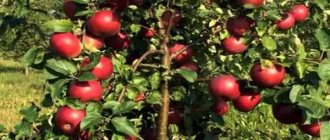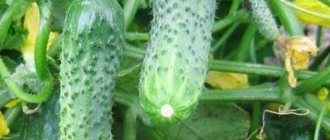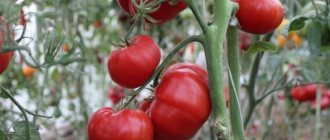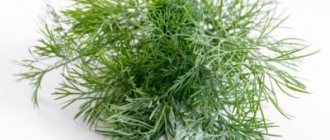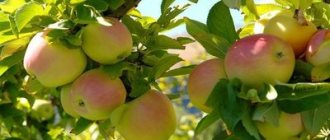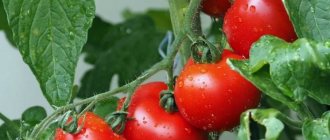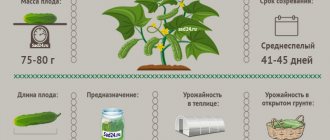One of the ancient early-ripening varieties of folk selection is the Korobovka apple tree, also known as Medunichka or Skorospelka. Produces very sweet small apples that ripen in summer.
This variety is practically not used in cultivated gardening, although, for example, in Poland it is considered one of the oldest varieties of apples, for which it is included in a special list.
In our country, it was no longer zoned due to its excessive small fruit, but it is widely used at fruit stations as a mother form for winter-hardy early-ripening varieties and is valued by breeders for its excellent hereditary traits.
It can be found in ancient abandoned gardens, since the tree is characterized by a long fruiting period (up to 50 years).
Characteristics of the variety
The Korobovka variety is popularly called Medunichka or Skorospelka.
Apple trees reach 5.5-6 m in height. Annual growth is 40-50 cm. By the age of 25, growth slows down.
For the first 15-20 years the crown is pyramidal, but over the years it acquires a spreading, paniculate shape. The branches are thick, strong, covered with brown, smooth bark. The leaves are round-elliptical in shape, dense, leathery, emerald green, slightly pubescent, wrinkled.
The tree is long-lived - its lifespan is about 50 years. It has average productivity - 70-75 kg of fruit can be removed from an adult tree.
From 18-20 years, the yield increases, but at the same time there is a sharp periodicity in fruiting, and the fruits become smaller.
The culture is self-sterile and requires nearby pollinators. Suislep, China Saninskaya, Cinnamon striped, Papirovka and White filling are suitable for her.
The first fruits are produced at 7-8 years of development. Productivity is stable, annual. Ripening occurs in mid-July. Apples stay on the tree for a long time without falling off or losing their marketability and taste.
Description of apples
The apples are flat-round, small - 50-60 g in weight, yellow-green, with red blurry strokes over the entire surface.
The pulp is light yellow with a loose structure and contains about 10% sugars. The taste is sweet, with slight sourness and a honey aftertaste. The aroma is strong.
The fruits are suitable for fresh consumption, making compotes, purees, jams, candied fruits, cider and wine.
Growing regions
This crop has a high degree of frost resistance and does not freeze during spring frosts. Drought resistance is high - with a lack of moisture, the tree does not stop growing and produces a bountiful harvest.
This apple tree is an excellent propagation material for amateur gardening in the Middle Zone.
It has become widespread in the countries of Eastern Europe - Russia, the Baltic states, Poland, Ukraine and Belarus.
Ripening and fruiting Korobovka
Beginning of fruiting
Fruiting of Korobovka does not begin early, but only 7-9 years after planting. However, it immediately produces quite a lot of fruit, up to half of the future harvest. At that time, you can remove at least 25-40 kilograms of small but very tasty fruits from fairly young trees.
Flowering time
The variety begins to bloom buds in May, like most other apple trees. However, the flowering process can fluctuate depending on the climate, other characteristics of the growing region and even the weather. In rainy, cool winters, trees may bloom only in the middle or second half of the month. The box flowers themselves are small, numerous, very fragrant, and densely cover the branches. They look especially beautiful on old trees, the branches of which sometimes fall low to the ground, becoming spreading.
Fruiting and growth
Trees of this variety grow slowly, no more than 15-25 centimeters per year, but only after they begin to bear fruit. Previously, they quite vigorously reach 2-3 meters, increasing at least 40-50 centimeters per season. Fertility also grows exponentially and reaches its maximum within a couple of years. Korobovka actively bears fruit for 25-40 years, after which it can give itself periods of rest, which can last for 2-4 years.
It is customary to pick the fruits at the beginning of July, since they ripen by the end of June. Moreover, in mid-June they begin to ripen gradually, starting from the upper branches to the lower ones, and in July this process occurs en masse. The fruits hold tightly to the branches and almost never fall off on their own, unless you delay picking until September-October or the trunks are damaged by pests. Apples have a low shelf life; they will hardly last 20-30 days, so it is best to send them straight away for processing.
Top dressing
- Superphosphate.
- Compost.
- Nitrogen fertilizers.
- Humus.
- Potassium complexes.
- Ammonium nitrate.
- Manure.
What to do if it doesn’t bloom or bear fruit
- Check for pests and diseases.
- Replant to a sunnier location.
- Limit or increase watering.
Landing rules
The fruits have a pleasant taste
Successful cultivation of an apple tree of the Korobovka variety depends on the quality of planting material, the time of planting, the correct location and soil.
Deadlines:
- in a harsh climate zone - in the spring, at the end of March or at the beginning of April, when the threat of return frosts has passed;
- in the south and in the middle zone - in early autumn, 1.5 months before the onset of persistent cold weather (from mid to late September).
Place and soil
Choose an area where there is no wind and the sun shines all day. This way the tree will fully grow and bear fruit. You can plant it in the south, southwest or southeast side of the garden.
It is important that there is no swamp in this place - the optimal depth of groundwater passage is 4 m.
You should not plant it in acidic soil, where the apple tree will develop poorly and produce a meager, unpalatable fruit harvest. If the acidity value is above 6 units, 400 g of calcite, chalk or slaked lime are added per 1 m².
You can plant a tree on loam or sandy loam. If the soil is heavy, it is necessary to loosen it using perlite or vermiculite - 20 kg per 1 m². After adding all the components, the planting area is dug up and leveled.
Seedling preparation
You can purchase planting material of this variety at a specialized nursery or gardening store.
Choose a seedling 50-60 cm high, 2-3 years old - it has a well-developed root system and crown.
Typically, trees are sold in an earthen coma or in containers so that the roots do not dry out before planting and successfully survive the procedure of transplanting into open ground.
You can determine the freshness and quality of an apple tree by the state of the crown - the shoots are flexible, covered with fresh, juicy leaves of rich green color. There are no signs of disease or mechanical injury on all organs.
Before planting, the rhizome is saturated with moisture - immersed in cold water for a couple of hours.
Landing technique
For full development and high-quality fruiting, seedlings require space - about 4.5 m.
The depth and width of the hole depends on the root system. Approximate parameters are 70x60 cm. A peg is driven closer to the wall for support.
Stages:
- The bottom of the pit is covered with drainage - pebbles, screenings or crushed stone.
- Then half lay the mixture of dug soil with humus and peat - a bucket of each component.
- Add 150 g of wood ash, 50 g of potassium sulfate and superphosphate to the soil mixture.
- To prevent the roots from getting burned, sprinkle with a thin layer of garden soil.
- The seedling is installed so that the root collar remains on the surface. Straighten the roots, fill in all the voids, compact them.
- After this, the tree needs to be watered - at least 2 buckets, mulched with peat or compost and tied to a support.
Features of planting and caring for an apple tree
Dates and methods of planting
Planting a seedling can be done in the fall (September) so that it can take root before the onset of frost. Or in the spring, in April, when the threat of return frosts has passed.
For planting, it is best to choose sunny areas with normal groundwater. Before planting, prepare a hole for the seedling with a depth of 50–60 cm, remove the top layer of soil, mix it with humus. A peg and a seedling are placed in the middle of the hole, carefully covered with the soil mixture made earlier and spilled with water.
You can make a small roll of soil along the outer perimeter of the hole to retain moisture.
Planting an apple tree in autumn
Agricultural technology for apple trees Korobovka
Agricultural technology includes several main activities:
- Watering;
- Feeding;
- Loosening;
- Removing weeds.
Watering is carried out in the root zone from spring to autumn, starting from the budding stage, adjusted for weather conditions. The amount of watering depends on the age of the tree; for an adult apple tree - 15 liters of water once a week.
Watering the apple tree
Organic fertilizers are applied in the fall before winter, slightly deepening them, mineral fertilizers - starting in spring: nitrogen-containing fertilizers on thawed-frozen soil, phosphorus-potassium fertilizers - according to the scheme, starting from the budding period with a frequency of three weeks before the start of ripening. If there is a need, you can also fertilize with microelements by spraying on the green mass.
Important! For preventive control of diseases and pests, it is advisable to introduce periodic spraying into agricultural technology: fufanon, Inta-Vir, copper sulfate. To increase the vitality of the tree and its immunity, drugs such as Zircon and Epin will be indispensable.
Caring for the tree trunk includes timely removal of weeds and loosening of the top layer of soil to improve moisture and air exchange. Loosening is carried out the next day after watering.
Pruning and crown formation
Pruning is carried out in autumn and spring. In the fall, it is necessary to remove damaged and weak shoots, which can become a hotbed for the spread of fungal and bacterial diseases in winter.
In the spring, formative pruning is carried out. You need to start approximately 3–4 years after planting the apple tree. Remove old, outdated branches, shoots that were damaged during wintering by snow drifts, and branches growing inside the crown.
Crown trimming
Pollinator varieties
Korobovka is a self-fertile apple tree, therefore, in order to obtain a full harvest, it is necessary to be in the vicinity of a pollinator variety, which include Cinnamon Striped, Papirovka, White Naliv, Kitayka Saninskaya.
Important! If you do not plant a pollinator variety, the number of ovaries formed will sharply decrease, which, accordingly, will lead to reduced apple tree productivity.
Care requirements
Watering
Use warm water for irrigation
To ensure rapid rooting, seedlings are watered every day for a month. 20 liters of water are poured under one plant.
Further moistening is necessary as the soil dries to a depth of 5-6 cm. The tree also needs moisture in early spring, before flowering, after the buds dry out, during the apple filling phase and in late autumn. The amount of water for each watering is 4-5 buckets.
The next day, the soil is loosened to maintain its aeration, weeds are removed, weeding between the rows, and the tree trunk circle is mulched with peat or humus.
Feeding
They begin to fertilize in the third year of life several times per season:
- in early spring, feed with nitrogen preparations: urea solution - 500 g or nitrophoska - 45 g per bucket of water;
- at the budding stage, water it with a liquid composition - mix 15 g of superphosphate and potassium sulfate, dissolve in 10 liters of water;
- re-feed with this complex after the flowers fall off;
- The last feeding is necessary in late autumn - 10 kg of compost or humus is placed in the tree trunk circle.
All root feedings are combined with abundant watering to speed up the process of absorption of beneficial microelements.
Trimming and shaping
The first pruning is carried out immediately after planting the tree - the central conductor is shortened by 15-20 cm in length to stimulate the development of lateral branches.
The following year in the spring, the procedure is repeated, the young growth is additionally trimmed by a third. This promotes good branching of the crown and the formation of fruitful branches.
Every autumn, diseased shoots broken off by the wind, dried out and growing inside the crown are cut out.
The cutting is carried out using a sharp and sterile instrument. To avoid infection after the procedure, the injured areas are irrigated with copper sulfate, then sealed with garden pitch.
Preparing for winter
A couple of weeks before the cold weather sets in, it is necessary to clear the garden of fallen leaves and carrion and dig it up. After this, they begin to prepare the tree:
- at the bottom the trunk is cleared of old bark and treated with slaked lime;
- Spud up with peat or rotted manure - the height of the mound is 15 cm;
- wrapped with film, then with a fine mesh to protect against rodents;
- the crown is wrapped in burlap or spruce branches.
In the spring, when the snow melts and the threat of return frosts has passed, the insulation is removed.
Starting from three years, the crown of the tree does not need to be insulated; only disinfection of the trunk and mulching is required.
Reviews:
- I remember the taste of these apples from childhood, sweet and very aromatic. To this day, wild animals can still be found in the abandoned garden of the collective farm. This year I want to try to plant Medunichka on my plot, I hope it will be possible to revive such a good variety - in my memory there are no tastier and sweeter apples, and what kind of compote are they?
- I don’t understand why there is a need to bring back some old outdated varieties when there are now modern, more sustainable and tasty ones. Look around people, what is there to revive? Small, scanty koloboks that in a couple of weeks will cease to have any taste? It’s not a fact that it will work out, but how much space will this colossus take up in the garden? No, I think we need to live for today and plant what does not remember the times of Lenin on an armored car.
- We still have this apple tree in our old dacha - a really tasty summer one. In general, apples appear on it every year, but they can be removed in abundance only once every 4 years. We are trying to rejuvenate it to extend its life, but now we are thinking of planting a seedling from it so as not to lose it completely, because the taste and smell of these summer apples cannot be compared with anything!
Diseases and pests
Diseases have a negative impact on productivity
The apple tree tolerates unfavorable weather well - frost damage and sunburn are not observed on the wood. However, it often suffers from an invasion of the codling moth and suffers from scab.
To protect the tree and maintain its productivity, it is necessary to carry out preventive treatment:
- for fungal infections, use Bordeaux mixture or copper sulfate - irrigate the crown in early spring and late autumn;
- pests will require insecticides - Karbofos, Fitoverm, treated in early spring, before and after flowering.
Additionally, you should adhere to a number of simple but very important rules:
- use healthy and strong seedlings for planting;
- avoid thickening;
- cut off diseased and mechanically damaged parts in a timely manner;
- regularly loosen, weed the soil between the rows, remove weeds, carrion and fallen leaves;
- dig up the garden every fall;
- systematically water and feed.
Advantages and disadvantages
The Korobovka variety does not have official status or recognition, but this did not stop it from becoming popular among amateur gardeners and owners of small gardens. The reason for this is the merits of the variety.
Advantages:
- taste – the fruits are extremely sweet, juicy and aromatic;
- high level of frost resistance - the variety is suitable for cultivation even in Siberia and the Urals;
- endurance and ease of care;
- high yields with proper care;
- good transportability of fruits.
Flaws:
- fruits are too small;
- low marketability;
- short shelf life of the crop;
- long ripening period;
- apple trees attract pests;
- the variety is not immune to scab;
- Over time, the fruits decrease and the harvest becomes irregular.
Another drawback that relates to the practical side of growing is that planting material is difficult to find.
Gardeners have to buy Korobovka seedlings from hand , and this never guarantees that the purchased planting material actually matches the characteristics of Korobovka.
Reviews from gardeners
Most gardeners who have experience growing Korobovka in their gardens speak positively about this variety and give it the highest rating.
Among the advantages, connoisseurs of the variety note taste, resistance to disease and frost, unpretentiousness of the tree and earlier ripening of the fruit.
also included among the advantages of the variety its unpretentiousness and endurance , frost resistance and ability to survive even the driest periods. But opinions were divided on this issue; some argued that the tree is difficult to care for and is often damaged by pests.
Of the negative nuances, gardeners noted the small fruit and low yield of aging trees. Trees attract the codling moth, and in winter its roots can be damaged by rodents. For some gardeners, a problematic nuance was the need for regular molding pruning of a thick and dimensional crown.
You can see reviews from gardeners to learn more about their experience of growing Korobovka here and here.
Features of cultivation in different regions
For each climate zone, there are certain rules for growing this crop.
Moscow region. The variety is ideal for this zone, so there is no need to use any special agricultural techniques in cultivation. The only thing is that you need to regularly apply organic and mineral fertilizers, and also prevent acidification of the soil.
Ural and Siberia. The plant is frost-resistant, excellent for cultivation in these regions. The main thing is to ensure timely and high-quality insulation for the winter, especially for young plantings.
Leningrad region. Due to high humidity and frequent rainfall, cultivating apple trees in this area can be problematic, as there is a high risk of fungal and bacterial infections. Therefore, preventive treatments are required in spring and autumn.
Apple tree Korobovka
In this article you will learn about the ancient early ripening apple tree variety Korobovka. The Korobovka apple tree has many small, sweet apples that ripen in the summer. In Poland, this variety is considered special due to its ancient origin. It is not particularly popular in our country due to the small size of the fruit. But still, the Korobovka apple tree is actively used as a mother form for the selection of frost-resistant and fast-ripening species and is valued for its excellent heredity.
It is no secret that the Korobovka apple tree can be found in an old abandoned garden, because the lifespan of this variety is more than fifty years.
